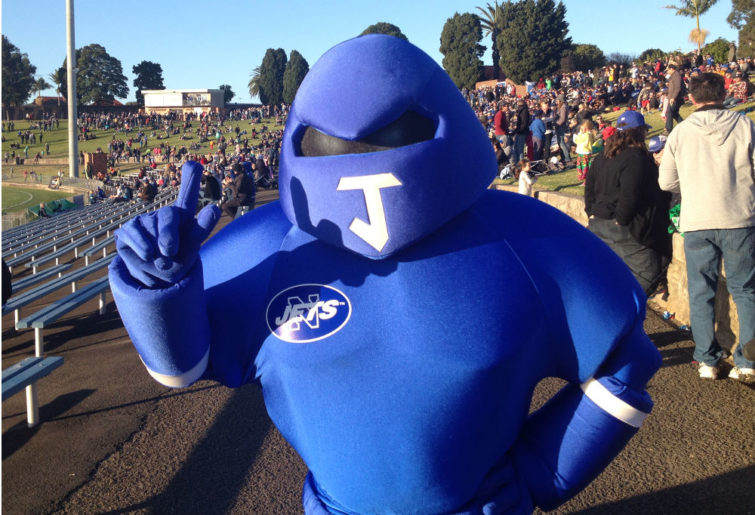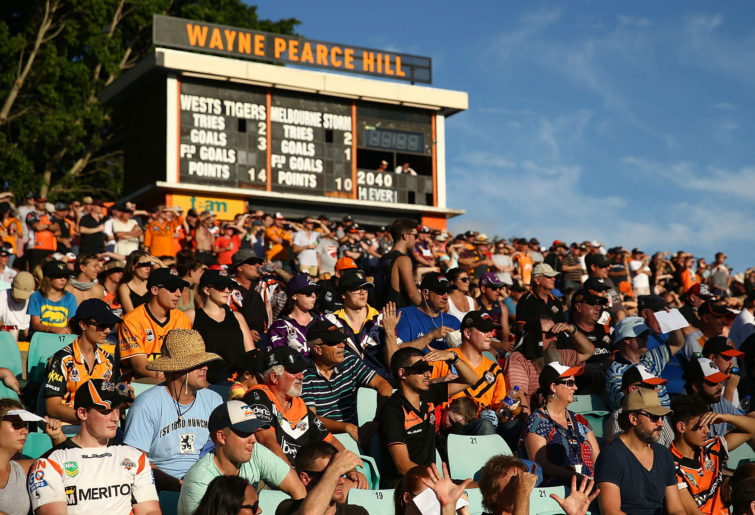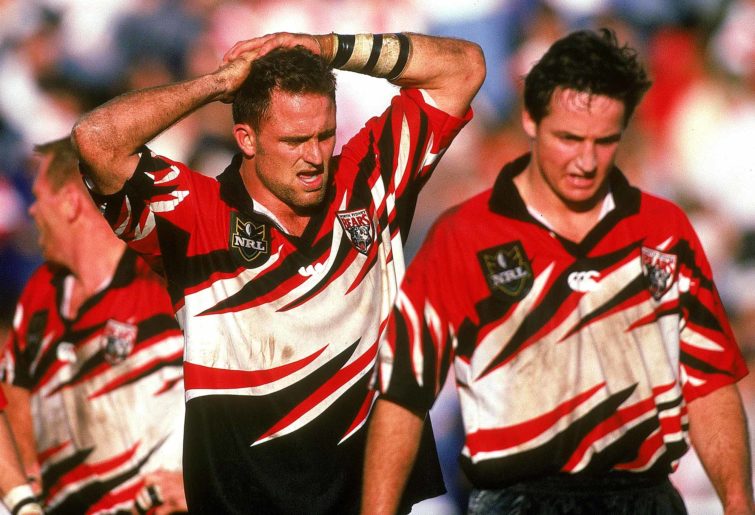Here in Brisbane, we’ve just had one of Lifeline’s book fairs.
Finding something interesting is like looking for the proverbial needle in the haystack. But, hey, it’s a good cause and you never know.
It’s also interesting to see what people are discarding and don’t want seen on their bookshelves. One year there were hundreds of copies of Fifty Shades of Grey. No wonder the recycling industry is under pressure.
This year I found a gem, Out of the Blue: The History of Newtown RLFC by Terry Williams. It cost me the princely sum of $9.
I was literally just a few days old when Newtown played their final game in the New South Wales Rugby League (NSWRL).
I’ve never lived in Sydney and know little of the city’s geography, demography and economy, or the nuance therein. The politics of Sydney rugby league are a distant world.
Reading about Newtown’s demise after the 1983 season, one comes across some of the same issues spoken of today in discussions about the future of Sydney’s overstuffed rugby league market and, of course, expansion of the NRL.

(Photo: Kris Swales)
Newtown’s demise was probably inevitable and had been predicted by many since the 1970s.
The club was virtually insolvent, relying on financial assistance from the NSWRL and trying to sell assets to stay afloat long enough to restructure and rebrand at the promised land of Campbelltown in Sydney’s rapidly growing west.
There were two main problems.
First, the club was reluctant to entirely walk away from its inner-city heritage.
Newtown’s rivals – Souths, especially – were greedily eyeing the club’s junior catchment; a catchment that had produced some of rugby league’s greatest players.
There was also doubt about whether the move to the west would work out. The economic downturn of the early 1980s had depressed the property market.
Newtown was struggling to sell its leagues club at Stanmore – at least for the sort of price the club needed to clear debt and finance its new venture.
The second reason: the move to the west didn’t work out.
While Newtown had already started playing games at Campbelltown in 1983, and while Newtown, the Campbelltown City Leagues Club and the NSWRL had agreed to the new venture, the Campbelltown side was in dire financial straits of its own.
Even with financial assistance from the NSWRL, Newtown might have been a millstone around Campbelltown’s neck. As Terry Williams observed, the rug was pulled out from beneath Newtown’s feet and “the inability to sell the licensed club was to be the rock on which Newton perished”.
Newtown finally sold the club in 1988 and were resurrected in the Metropolitan Cup in 1991 and, eventually, the New South Wales Cup in 2000. But they were long gone from top-flight rugby league, never to return.
Which brings us back to the present.
What is it about Campbelltown? It wouldn’t have saved Newtown. It certainly didn’t save Western Suburbs. The Wests Tigers are clearly reluctant to commit to the area.
Like I said, I don’t know Sydney.
Are the Tigers myopic or is there another reason for their reluctance and apparent limbo, in neither the chic streets of Balmain nor the distant lands of Macarthur?

(Photo by Mark Metcalfe/Getty Images)
Is Campbelltown too far away? Is it already being raided by Penrith and Parramatta to the west, and St George Illawarra and Cronulla to the east? Is football taking whatever market share remains?
The second echo from the past is the role of leagues clubs in recent expansion bids.
The homeless Dolphins’ thriving licensed venue was clearly a big part of its forthcoming ascension to the NRL.
Despite seemingly wise investment in licensed premises of its own, the North Sydney Bears remain in purgatory.
Licensed clubs are not necessarily a license to print money. Demographics and tastes change.

(Photo by Getty Images)
If state governments ever get around to doing something about the scourge of poker machines, many financial outlooks will change for the worse.
Leagues clubs are not the only uncertain source of revenue for rugby league clubs.
Who knows what the future of broadcast media looks like?
Channel Nine is wavering and while Foxtel is bullish, the company is not a model of profitability and trapping more NRL games behind its paywall might not be a good thing for Foxtel or anybody else.
Not everybody can afford a Foxtel subscription and there are those who refuse to buy one on principle.
If you don’t have a wealthy benefactor – and most NRL clubs don’t – the future will always be uncertain.
On that note, it’s worth remembering one of rugby league’s true believers, the late Frank Farrington, or Mr Newtown.
As Williams wrote, “In his fifty-year love affair with the game Farrington won some tremendous honours, being chosen as manager for the New South Wales team… and serving as co-manager for the 1982 Kangaroo tour. His greatest work, though, was at club level where he gave heart and soul to [Newtown] and personified the never-say-die battler.”































































































